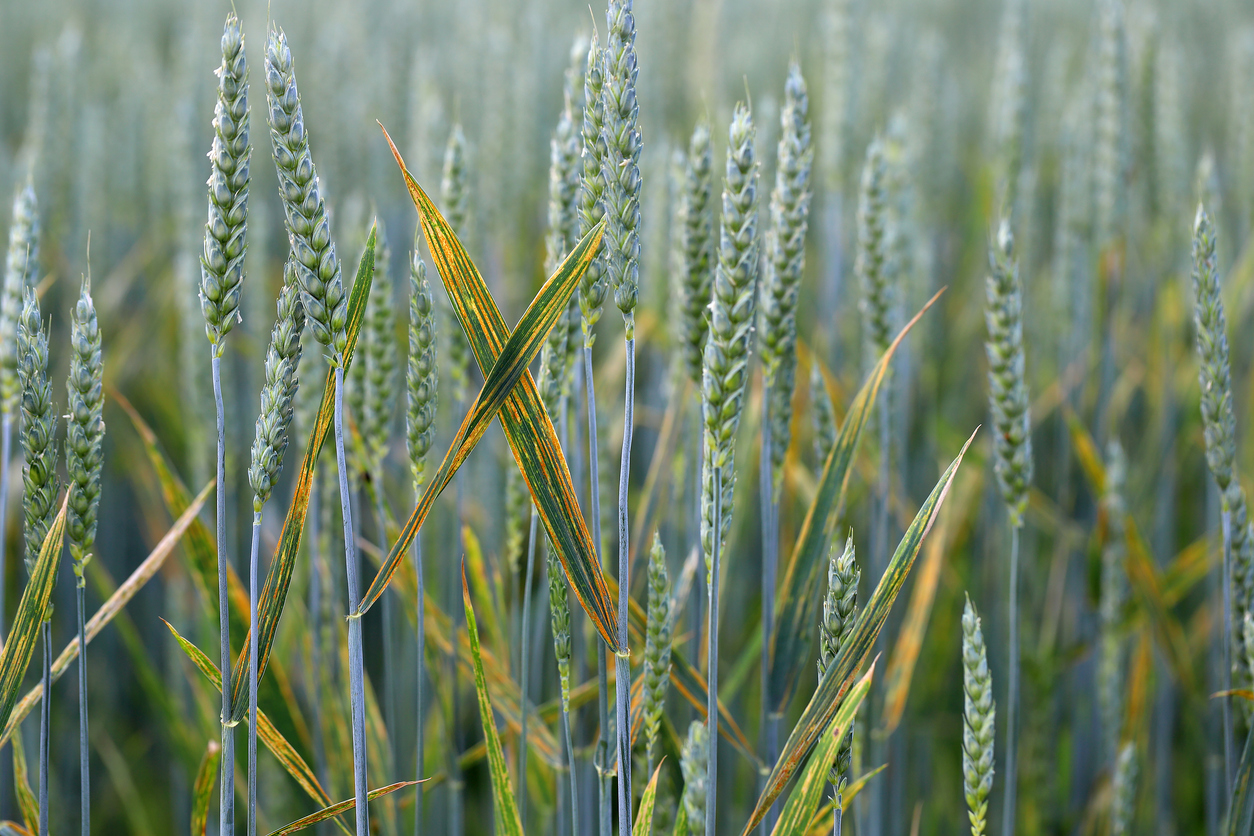
Scientists Unveil Genetic Map to Wheat 'Cancer'
July 30, 2025| |
Chinese scientists have created the world's first genetic map for wheat resistance to yellow rust, a destructive fungal disease. Published in Nature Genetics, this breakthrough was a collaborative effort between Northwest Agriculture and Forestry University (NWAFU) and the Chinese Academy of Sciences' Institute of Genetics and Developmental Biology. The map provides plant breeders with a crucial tool to develop more durable wheat varieties that are resistant to the disease.
Yellow rust, often called "wheat cancer," is caused by Puccinia striiformis f. sp. tritici (Pst). This rapidly mutating disease generates a new dominant pathotype approximately every five years and is responsible for an estimated 10% of global wheat yield loss annually. The research team, led by Kang Zhensheng of NWAFU, spent five years comprehensively analyzing 2,191 wheat accessions globally and over 47,000 yellow rust response records. Their work systematically reveals the co-evolutionary dynamics between wheat resistance genes and pathogen races over the past century.
They identified 431 yellow rust resistance loci and constructed a genome-wide map of these genes. From 559 candidate genes, they successfully cloned three novel resistance genes, including Yr5x, a new allele showing resistance to multiple Pst races; Yr6/Pm5, which provides dual resistance to both yellow rust and powdery mildew; and YrKB (TaEDR2-B), which confers broad-spectrum rust resistance without negatively impacting yield. These elite haplotypes that combine disease resistance with strong agricultural performance represent a significant advancement in breeding resistant wheat cultivars, which is crucial for managing this devastating disease.
For more details, read this article or download the paper in Nature Genetics.
| |
You might also like:
- USask Researchers Discover Pair of Genes that Protect Wheat from Stripe Rust
- CAAS Develop Gene Editing System for Wheat
- Pocket K No. 60: Rust-resistant Wheat
Biotech Updates is a weekly newsletter of ISAAA, a not-for-profit organization. It is distributed for free to over 22,000 subscribers worldwide to inform them about the key developments in biosciences, especially in biotechnology. Your support will help us in our mission to feed the world with knowledge. You can help by donating as little as $10.
-
See more articles:
-
Plant
- Scientists Unveil Genetic Map to Wheat 'Cancer'
- EFSA GMO Panel Releases Scientific Assessment of GM Cotton T304‐40
- Last Chance to Avail the Early Bird Discount for ASCA8
- Report Highlights How AI and Biotech Could Drive Development of Resilient Crops
-
Food
- ETH Zurich Experts Produce Cultivated Bovine Muscle Fibres
- Longitudinal Study Finds No Adverse Health Effects of GM Maize in Primate Model
- GM East African Highland Bananas Retain Pro-Vitamin A Levels After Prolonged Traditional Cooking
- ISAAA E-newsletter Evolves to Deliver Enhanced Value in Agri-biotech
-
Read the latest: - Biotech Updates (December 17, 2025)
- Gene Editing Supplement (December 17, 2025)
- Gene Drive Supplement (February 22, 2023)
-
Subscribe to BU: - Share
- Tweet

